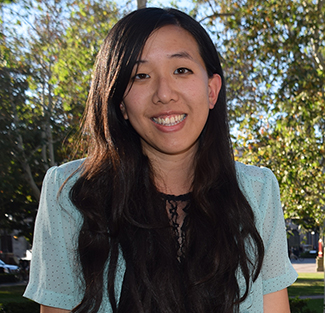
Joanna Chen Cham
The stories are truly harrowing.
One man watched as his house was burned down – with his baby brother inside. Another man’s grandfather literally died protecting him from attacking soldiers, and women tried to make themselves “ugly” so they wouldn’t be raped.
These are survivors of the 1937 Nanjing Massacre that USC Shoah Foundation interviewed for its Nanjing Massacre collection in the Visual History Archive. Since 2014, a total of 30 interviews have been collected and integrated into the Visual History Archive.
However, most of these testimonies were not indexed – using USC Shoah Foundation’s thesaurus of over 63,000 keywords – until now. This summer, research assistant Joanna Chen Cham indexed 18 of the 30 Mandarin-language testimonies, making them easily searchable in the Visual History Archive alongside the other 53,000 testimonies of Holocaust, Armenian and Rwandan Genocide survivors.
Cham studied history and Jewish studies at UC Berkeley and got her master’s in library and information science at UCLA. She also worked at Los Angeles Museum of the Holocaust, helping to research and design exhibits and also to process its archival collections.
She said she has always been interested in the Holocaust because it happened both recently enough that we can still interact with survivors and witnesses, and enough time has gone by to see how it has affected the course of history.
“You have to understand the global context of the war but you also have to look at the personal context of each [person’s] story,” Cham said. “That’s what drew me in, both the personal and global aspect of that story, and that triumph of the human spirit. Being able to hear from survivors themselves was a very powerful experience for me in my college experience.”
Cham has been connected to USC Shoah Foundation since the early days of IWitness, when she interned with the education team. This summer, she returned to USC Shoah Foundation to work with Visual History Archive curator Crispin Brooks on a project researching new keywords and indexing methodologies, and was hired to stay on as the sole indexer on the Nanjing Massacre collection.
Her job entailed watching each testimony and assigning keywords to each minute according to what the interviewee is talking about, such as people, places, events and themes. Cham was able to draw from the existing thesaurus for many keywords but also had to work with Brooks and other staff to create new terms for topics not previously discussed in the archive’s other collections.
Though the testimonies are spoken in Mandarin, all the indexing was done with English keywords.
It was hard to listen to the survivors’ intense and emotional stories, Cham said. Though most of them were children, even babies, during the Nanjing Massacre, they still feel great sadness and guilt about what happened to them and their families. Aware of the great responsibility on her shoulders to index the testimonies as accurately as possible, Cham made sure to work through each testimony slowly and carefully, out of utmost respect to the survivors.
Though the work was tough both mentally and emotionally, Cham pointed out that the testimonies are ultimately symbols of strength.
“All the stories incredibly sad and heartbreaking – but, the silver lining is we have these records because someone in that family survived,” Cham said.
Now that she is finished, Cham is writing a report for USC Shoah Foundation about her experience, including recommendations to help streamline the interviewing and indexing process for future Nanjing testimonies.
It was an honor for her to play a part in preserving the Nanjing Massacre testimonies for future generations in the Visual History Archive.
“The survivors who have the courage and bravery to step forward and tell us their stories, their stories deserve to be respected, and their stories deserve to be heard and to be remembered,” Cham said. “As hard as it is to listen to these testimonies, it’s a small part that we can play in preserving and commemorating these stories and the survivors.”